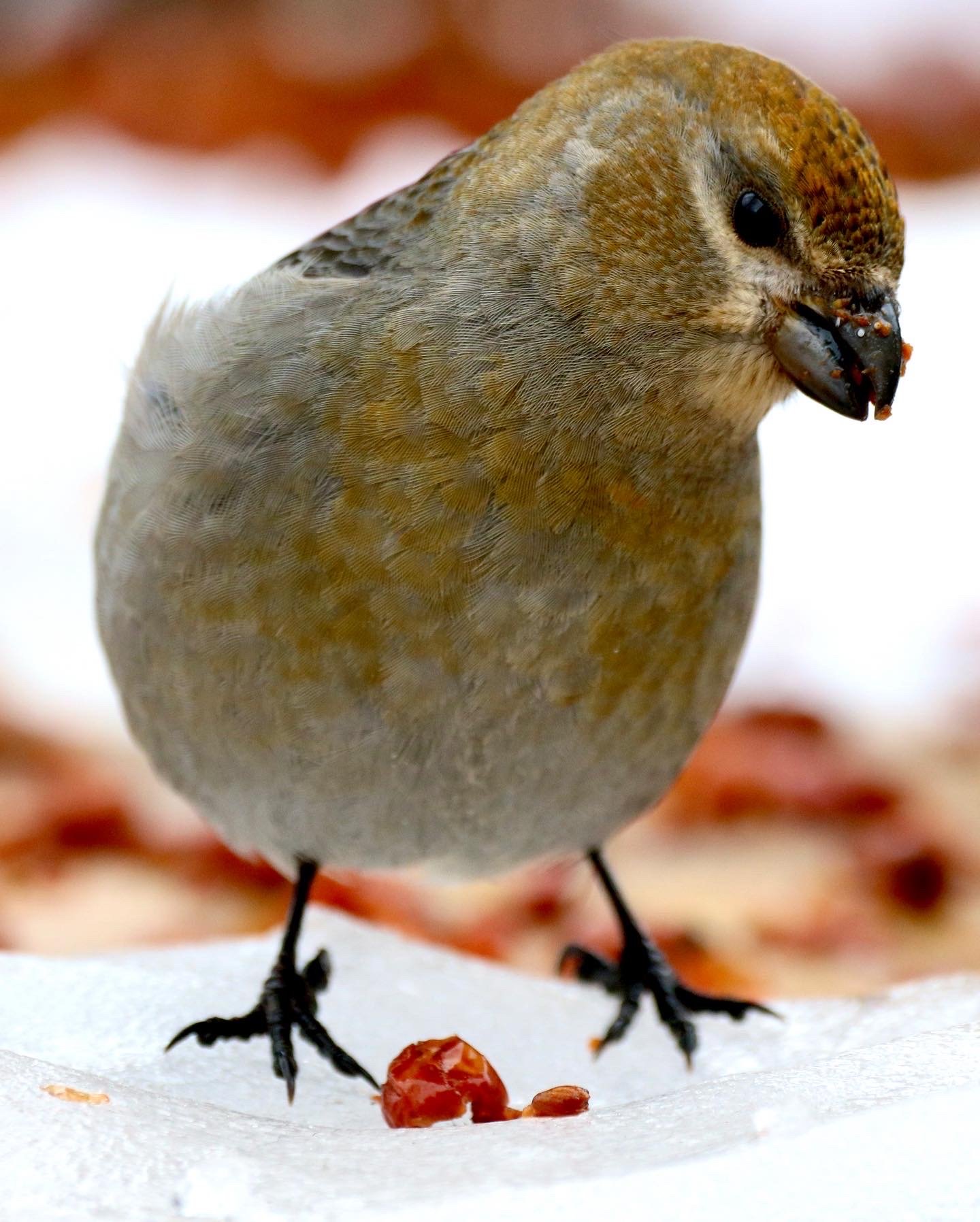A Mope Among The Dogberries
Okay, that title may only be useful for Newfoundlanders — neither mopes nor dogberries are widely recognized by those names off the island. Newfoundland has a lot of words like that, so many that there is a 700+ page Dictionary of Newfoundland English.
I love our unique terminology but I will admit, from time-to-time, it makes reading/researching difficult — you sort of need to know what the rest of the English-speaking world calls a mope if you want to do much of a survey of the literature.
What Is A Mope?
A mope is a colourful finch that is fairly common across the woodlands of Newfoundland and the whole northern hemisphere, really.
Outside of Newfoundland, much of the English speaking world calls it the pine grosbeak. It’s Latin name is Pinicola enucleator.
The latin name tells you a lot about the bird really. Pinicola refers to pine trees and that’s where the mope spends a lot of its time — the evergreen forest. The Enucleator bit roughly translates to ‘de-seeder’ and the adult mope is a voracious eater of seeds, fruits and buds.
The Newfoundland name, mope, tells you a bit about the bird’s demeanour. It can appear a bit mopey. It makes slow hopping movements and generally doesn’t seem too bothered by anything. It’s no problem to find yourself in close proximity to these birds, their lackadaisical nature extends to people. They are pretty tame.
Even if you’re not a birdwatcher the mope might look familiar to you, especially if you’re a big spender. It appeared (captioned as pine grosbeak) on Canada’s $1000 bill in 1986 ‘Birds of Canada’ design.
The changing climate doesn’t bode well for the future of the mope. According to Audobon.org, even a temperature increase of 1.5C will unfavourably change the habitat and range of the mope on the island. For now, they’re not too hard to find — they’ve been turning up in the dogberry trees in my backyard all winter.
What’s a Dogberry?
Mopes like seeds and fruit and one of their local favourites seem to be dogberries.
Outside of Newfoundland the dogberry is more commonly called the mountain ash or rowantree. It is a mid-sized fruit-bearing tree that dots the hillsides of the island. It looks spectacular year-round. It’s a beautiful green in the spring, then studded with clusters of white flowers, followed by beautiful red berries that stay long after its leaves have fallen. The berries look amazing through the winter and provided a welcome food source for a range of wildlife, including the mope.
Dogberries are, cautiously, edible. As with cherries and some other fruits, the seeds contain amygdalin, a toxin that metabolizes into cyanide. In any case the berries, as they come from the tree, are so astringent that they are usually avoided. People have made jams and jellies with them and dogberry wine was once a Newfoundland staple.
My most frequent use of the dogberry is pretty unscientific, though. Around these parts the dogberry tree is considered a bit of a forecaster. It is said that a heavy crop of dogberries foretells a hard winter. I have no idea if it’s true. I suspect the dogberry crop reveals more about the growing conditions of the previous summer than the impending winter… but then who knows? Maybe the conditions that led to good growth set us up for a hard winter?
The dogberries will look spectacular in the snow, in any case.




